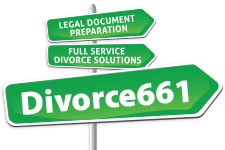The Best Way To Complete Your California Divorce Is Through A Divorce Settlement Agreement
Did you know that the courts want you to come to an agreement about the terms of your California divorce. That’s right. They don’t want you in their court and they want you to figure it out.
They know that you and your spouse are the persons who know whats best for the two of you as it pertains to a divorce settlement.
Here is a quick video where we discuss what a marital settlement agreement is.
What Is A Divorce Settlement Agreement?
A divorce settlement agreement (Also known as a Marital Settlement Agreement) is simply a document that will detail all the agreements of your divorce. This will cover all areas of the divorce such as:
- Division of Assets and Debts
- Spousal Support
- Child Support
- Parenting plans
- And anything else you want included in the final agreement
The Marital Settlement Agreement Is The Final Step To Divorce
Too often, our clients are trying to figure out the entire terms of their divorce before they even take the first step to starting their divorce. This is putting the cart before the horse.
There is no way you can decide on how to divvy up your assets and debts until both parties have completed their financial disclosures which will allow both of you to have a complete understanding of what is on the table and what needs to be divided.
So What Do You Do?
We recommend that you call our divorce service to discuss the issues of your divorce. Most people do not need an attorney for their divorce case.
We can help you complete all the steps of your divorce including drafting the Marital Settlement Agreement to be attached to your final judgment in your divorce.
Call us to discuss your options. We have helped thousands of people complete their divorce. We are a licensed and bonded divorce document preparation firm that specializes in only divorce.
The owner, Tim Blankenship, is a leader in the legal services field and has worked for the Los Angeles Superior Courts and for major area law firms. Tim has wrote over 1000 articles related to divorce, has hundreds of “how to” and instructional divorce videos and has a daily podcast.
You can reach us direct at 661-281-0266. We would be happy to discuss your case and let you know if you are a good fit for our service.
